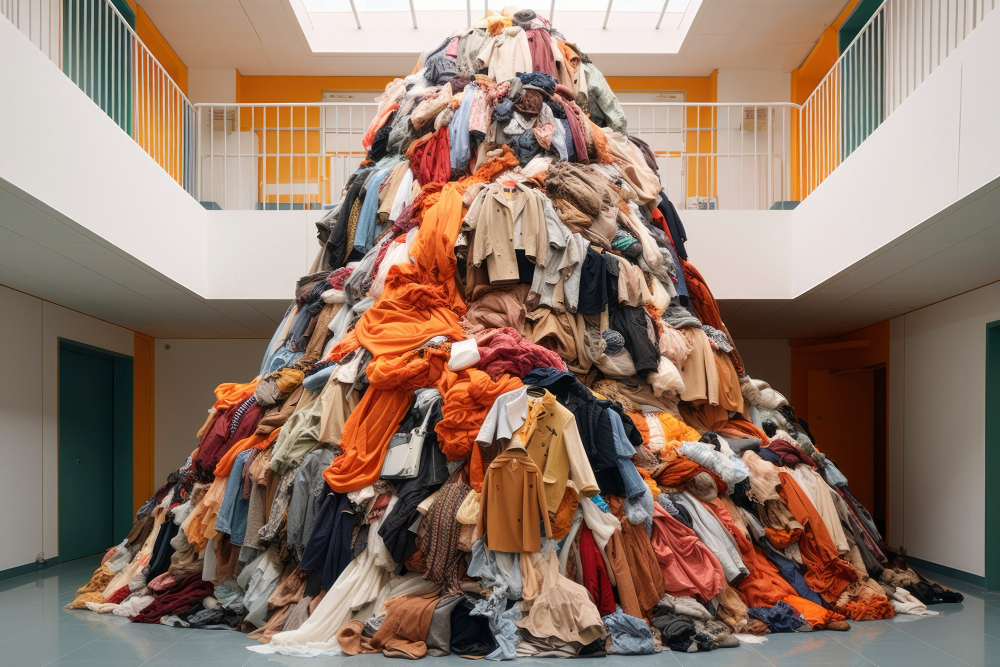Fast fashion has revolutionized the clothing industry, offering trendy styles at affordable prices. However, this convenience comes at a significant environmental cost. Fast fashion’s rapid production cycles and disposable nature contribute to pollution, resource depletion, and waste. This article explores the environmental impact of fast fashion and provides practical tips on how to avoid it.
Fast fashion refers to the rapid production of high volumes of clothing, replicating the latest trends and selling them at low prices. Brands like Zara, H&M, and Forever 21 have built business models around fast fashion, encouraging consumers to purchase frequently and discard quickly.

The fast fashion industry has several detrimental effects on the environment, including pollution, resource depletion, and waste.
Making conscious choices can help reduce the impact of fast fashion on the environment. Here are some practical steps to avoid contributing to this industry:
Support brands that prioritize sustainability and ethical practices. Look for certifications like Fair Trade, GOTS (Global Organic Textile Standard), and B Corp.
Invest in high-quality garments that are designed to last longer. These pieces might be more expensive upfront but will save money in the long run and reduce waste.
Shop second-hand at thrift stores, consignment shops, and online platforms like ThredUp and Poshmark. Upcycling old clothes into new items is another creative way to extend the life of your wardrobe.
Adopt a minimalist approach to fashion by curating a capsule wardrobe. Focus on a few essential pieces that you love and wear regularly.
Properly caring for your clothes can extend their lifespan. Follow care labels, wash clothes in cold water, and air dry whenever possible.
Stay informed about the fashion industry and its impact on the environment. Follow blogs, documentaries, and books that provide insights into sustainable fashion.
Fast fashion has a significant environmental impact, contributing to pollution, resource depletion, and waste. By making conscious choices and adopting sustainable practices, we can reduce our impact and promote a more eco-friendly fashion industry. Choose quality over quantity, support sustainable brands, and educate yourself to make informed decisions. Together, we can create a positive change for the environment.
Ready to make a difference? Start incorporating sustainable fashion practices today and reduce your impact on the environment!

Q: What is fast fashion? A: Fast fashion refers to the rapid production of large volumes of clothing that replicate the latest trends at low prices. Brands such as Zara, H&M, and Forever 21 are known for their fast fashion business models.
Q: How does fast fashion impact the environment? A: Fast fashion contributes to significant environmental damage, including water pollution from toxic dyes, air pollution from factory emissions, resource depletion from excessive water and raw material usage, and massive textile waste that often ends up in landfills.
Q: What can I do to avoid supporting fast fashion? A: To avoid fast fashion, you can buy from sustainable brands, invest in higher-quality pieces that last longer, shop second-hand, upcycle old clothes, and adopt a minimalist wardrobe approach. Additionally, properly caring for your clothes can extend their lifespan.
Q: Are there certifications to look for when buying sustainable fashion? A: Yes, certifications like Fair Trade, GOTS (Global Organic Textile Standard), and B Corp can help you identify brands that prioritize sustainability and ethical practices.
Q: What is the difference between fast fashion and slow fashion? A: Fast fashion emphasizes quick production and consumption of trendy clothing, often at the expense of quality and sustainability. Slow fashion, on the other hand, focuses on thoughtful, sustainable, and ethical production processes, resulting in higher-quality, longer-lasting garments.
Q: Can fast fashion ever be sustainable? A: While some fast fashion brands are making efforts to adopt more sustainable practices, the fundamental model of fast fashion, which encourages overconsumption and rapid turnover of clothing, is inherently unsustainable. True sustainability requires systemic changes in production, consumption, and disposal practices.
Q: What are some examples of sustainable fashion brands? A: Examples of sustainable fashion brands include Patagonia, Eileen Fisher, Reformation, Tentree, and Amour Vert. These brands prioritize eco-friendly materials, ethical labor practices, and transparency in their supply chains.
Q: How can I properly care for my clothes to make them last longer? A: To extend the lifespan of your clothes, follow care labels, wash clothes in cold water, air dry instead of using a dryer, and use eco-friendly detergents. Avoid over-washing and consider repairing or upcycling garments instead of discarding them.
Transform Your Wardrobe: Embrace Style and Sustainability
How to Spot and Avoid Greenwashing in Fashion
Creating a Capsule Wardrobe with Ethical Brands
Leave a comment